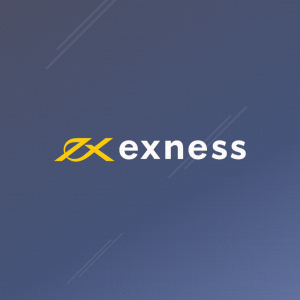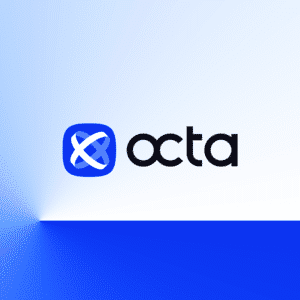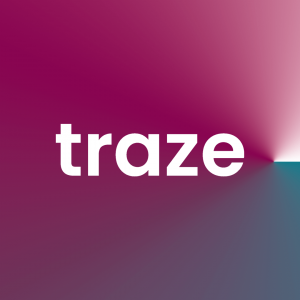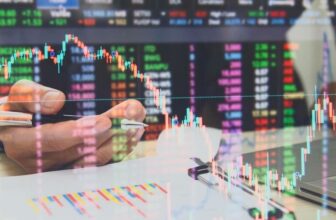
Leverage is a concept that plays a crucial role in the world of trading. It refers to the use of borrowed money, known as capital, to invest in various financial instruments such as currencies, stocks, or securities. Leverage is particularly prevalent in forex trading, where investors borrow funds from brokers to trade larger positions in different currencies. Let’s see how it works.
Leverage, in trading, involves using borrowed funds to increase your trading capacity beyond what your cash balance alone allows. This mechanism is made possible through margin trading, where your broker provides you with the funds needed to execute larger trades.
Key Takeaways:
- Leverage involves using borrowed capital to invest in financial instruments.
- Forex trading often utilizes leverage to trade larger positions in currencies.
- Leverage can magnify both profits and losses, necessitating risk management strategies.
- Traders should carefully consider their risk appetite when determining the appropriate leverage ratio.
- Implementing effective risk management strategies is crucial when using leverage in trading.
The Concept of Leverage in Forex Trading
One of the distinguishing features of trading forex, as opposed to other financial instruments, is the availability of higher leverage. While the term “leverage” may be familiar to many traders, comprehending its precise definition, operational mechanics, and its direct implications on one’s trading outcomes is crucial.
In forex trading, leverage plays a crucial role in amplifying potential profits. Leverage allows traders to control larger positions in the market with a smaller amount of capital. It is essentially borrowing funds from the broker to increase the size of the trade. By using leverage, traders can take advantage of movements in currency pairs and potentially earn higher returns.
In essence, leveraging in trading allows you to amplify both your potential profits and losses. Leveraged products, such as Contracts for Difference (CFDs), have the remarkable ability to magnify gains, but they also magnify the associated risks. It’s vital to understand that trading with leverage means that your broker puts up the majority of the capital for your position, while you commit a fraction of the trade size as a deposit. This mechanism is employed in various asset classes, not just forex, and can significantly impact your trading experience.
The leverage ratio is a key factor to understand in forex trading. It represents the amount by which the trade size is magnified compared to the margin requirement. Different brokers offer various leverage ratios, typically ranging from 50:1 to 200:1. For example, a leverage ratio of 100:1 means that for every $1 of capital, traders can control $100 in the market.
It is important to note that while leverage can enhance profits, it also amplifies losses. If the market moves against the trader’s position, losses can exceed the initial capital invested. Therefore, it is essential for traders to implement risk management strategies, set stop-loss orders, and closely monitor their trades when using leverage. Wise and prudent utilization of leverage is key to successful trading.
| Leverage Ratio | Trade Size | Margin Requirement |
|---|---|---|
| 50:1 | $50,000 | $1,000 |
| 100:1 | $100,000 | $1,000 |
| 200:1 | $200,000 | $1,000 |
Leverage, in its essence, is the strategic use of borrowed funds to amplify your trading capacity beyond the limits of your cash balance. This is made possible through the mechanism of margin trading, where your broker extends a helping hand by providing the necessary borrowed funds to enhance your trading positions.
Imagine you have a certain amount of capital in your trading account, and you wish to take a larger position in a particular financial asset, be it a currency pair, a stock, or a commodity. Leverage steps in to make this possible. It enables you to control a more substantial position than your actual capital allows. In essence, you’re utilizing a financial booster, provided by your broker, to magnify your trading exposure.
To understand this concept better, let’s consider an example. Suppose you have $1,000 in your trading account, and you want to trade a particular currency pair. Thanks to leverage, your broker allows you to control a position much larger than your initial $1,000 investment. Depending on the level of leverage, you might be able to open a position worth 5 times, 10 times, 20 times, or even 33 times your initial deposit.
For instance, with a 10x leverage, your $1,000 can control a position equivalent to $10,000. This means that the broker provides the additional $9,000 to facilitate this trade. Your profits and, conversely, your losses, are calculated based on this entire $10,000 position. The broker essentially extends a loan to you, enabling you to operate with a more substantial sum than you initially possess.
The Risks and Benefits of Leverage in Forex Trading
When it comes to forex trading, leverage can offer both potential benefits and risks. Leverage allows traders to amplify their positions and potentially earn higher profits. By borrowing funds from their broker, traders can trade larger positions than their initial capital would allow. This can be particularly advantageous in a highly liquid and volatile market like forex.
Forex trading, in particular, is known for its appeal due to the substantial leverage it offers. It allows traders to control much larger positions with a relatively small amount of capital. This advantage stems from the ability to borrow funds from a broker to participate in trades. However, while leverage can magnify profits, it can also amplify losses, making it a double-edged sword.
For instance, if you have $10,000 in your trading account and you open a $100,000 position, you’re essentially trading with 10 times leverage on your account (100,000/10,000). This means that your profits or losses can be significantly magnified.
However, it is important to be aware of the risks associated with leverage. While it can magnify profits, it can also magnify losses. If the market moves against a trader’s expectations, the losses can be substantial. To mitigate these risks, it is crucial for forex traders to have a disciplined trading style, implement risk management strategies, and use stop-loss orders to control potential losses.
Traders should carefully consider their risk appetite before applying leverage in their trading strategy. It is essential to have a clear understanding of the downside of using leverage and to assess whether the potential benefits outweigh the risks. By taking a cautious approach and employing effective risk management techniques, traders can navigate the forex market with confidence and potentially capitalize on opportunities for increased profits.
The Importance of Risk Management
Leverage can indeed be a potent tool, but it comes with risks. It can amplify both gains and losses, and understanding how to navigate this double-edged sword is crucial for any trader. Consider a scenario where you use leverage to open a position worth $1,000 with just a $200 deposit. If the market moves in your favor and the position gains $400, you’ve doubled your initial margin. However, if the market moves against you and results in a $400 loss, you’ve also doubled your initial outlay.
This underlines the importance of using leverage cautiously and having a well-defined risk management strategy.
Risk management is crucial when utilizing leverage in forex trading. Traders need to develop a comprehensive risk management plan to protect their capital and minimize potential losses. Here are a few key strategies:
- Setting stop-loss orders: By setting predetermined exit points in case the market moves against their position, traders can limit their potential losses.
- Using proper position sizing: Traders should carefully determine the appropriate position size based on their risk tolerance and the leverage ratio used.
- Diversifying the portfolio: Spreading risk across multiple currency pairs can help mitigate the impact of potential losses in a single position.
In summary, leverage in forex trading can offer the potential for increased profits, but it also comes with inherent risks. It is important for traders to approach leverage with caution, implement effective risk management strategies, and always be mindful of the potential downsides. By doing so, traders can better navigate the forex market and potentially capitalize on trading opportunities while protecting their capital.
Benefits and Risks of Leverage in Forex Trading
| Aspect | Benefits of Leverage in Forex Trading | Risks of Leverage in Forex Trading |
|---|---|---|
| Potential for Higher Returns | 1. Magnifies Profits: Leverage allows traders to control larger positions with a smaller capital investment, potentially leading to higher profits when successful. | 1. Magnifies Losses: Just as leverage amplifies profits, it also magnifies losses, which can lead to substantial financial losses if the trade goes against you. |
| Capital Efficiency | 2. Capital Efficiency: Leverage enables traders to access the forex market with less capital, making it more accessible to a wider range of participants. | 2. Margin Calls: Excessive leverage can result in margin calls, forcing traders to deposit additional funds to cover potential losses. |
| Diversification | 3. Diversification: Traders can diversify their portfolios and access a variety of currency pairs or strategies, reducing concentration risk. | 3. Overtrading: Leverage may encourage overtrading, as traders take on more positions than they can manage effectively. |
| Cost Savings | 4. Cost Savings: Leverage can reduce the cost of trading by requiring less upfront capital. | 4. Interest Costs: When using leverage, traders may incur interest costs if holding positions overnight. |
| Liquidity | 5. Liquidity: Leverage enhances liquidity in the forex market by increasing trading volume and market activity. | 5. Slippage: High leverage can lead to slippage, where orders are executed at different prices than expected, potentially resulting in losses. |
| Risk Management | 6. Hedging: Leverage can be used for hedging purposes to protect against adverse exchange rate movements. | 6. Emotional Stress: High leverage can lead to emotional stress and poor decision-making due to the fear of significant losses. |
| Flexibility | 7. Trading Flexibility: Leverage offers flexibility, enabling traders to enter and exit positions with ease. | 7. Limited Margin: Using excessive leverage may tie up a significant portion of your capital as margin, reducing your ability to take advantage of other trading opportunities. |
| Profit from Small Movements | 8. Profit from Small Moves: Leverage allows traders to profit from small price movements, increasing the potential for short-term gains. | 8. Sudden Market Volatility: Rapid market movements can trigger stop-loss orders, leading to significant losses. |
| Accessibility | 9. Accessibility: Leverage makes forex trading accessible to retail traders, not just institutional investors. | 9. Counterparty Risks: Trading with leverage involves counterparty risks, such as broker defaults or insolvency. |
| Enhance Trading Strategies | 10. Strategy Enhancement: Leverage can enhance certain trading strategies, such as day trading or scalping, by magnifying potential gains. | 10. Lack of Experience: Inexperienced traders may misuse leverage, leading to losses they cannot afford. |
The Importance of Leverage Ratio in Trading
When it comes to trading, understanding the importance of leverage ratio is crucial for managing risk and maximizing potential returns. The leverage ratio determines the trade size and the amount of leverage used, making it a key factor in trading decisions. By calculating the leverage ratio, traders can assess how much they can magnify their positions with the available margin.
A higher leverage ratio allows traders to trade larger positions with a smaller margin requirement. This means that even with a limited amount of capital, traders can access larger opportunities in the market. However, it is important to note that higher leverage ratios also come with increased risk. As the amount of leverage used increases, so does the potential for larger losses if the market moves against the trader’s expectations.
Margin trading with leverage provides traders with the ability to control larger positions in the market. The leverage ratio determines the extent to which traders can amplify their trades, but it is essential to understand and manage the associated risks. Implementing risk management strategies, such as setting stop-loss orders and diversifying the portfolio, can help traders mitigate potential losses and protect their capital.
Cracking the Leverage Ratio Code
Understanding your leverage ratio is vital for prudent trading. The leverage ratio quantifies your trade’s total exposure in comparison to the margin requirement set by your broker. Let’s take an example: if your broker mandates a 10% margin, this provides the same exposure as investing $1,000 with only $100 as margin. This results in a leverage ratio of 10:1.
The choice of leverage ratio can have a profound impact on your trading outcomes. The more leverage you use, the more potential for profit or loss you expose yourself to.
Example Leverage Ratio Calculation:
| Trade Size | Margin | Leverage Ratio |
|---|---|---|
| $10,000 | $1,000 | 10:1 |
| $50,000 | $2,500 | 20:1 |
| $100,000 | $5,000 | 20:1 |
In the example above, different trade sizes and margin amounts result in varying leverage ratios. Traders with a higher risk tolerance may opt for higher leverage ratios to amplify their trading positions, while those seeking more conservative approaches may choose lower leverage ratios to reduce risk exposure.
Ultimately, understanding the importance of leverage ratio in trading is vital for effective risk management and maximizing trading opportunities. Traders must carefully evaluate their risk appetite and consider market conditions before selecting an appropriate leverage ratio for their trading strategy. By balancing potential returns with risk mitigation, traders can navigate the financial markets with confidence and increase their chances of success.
Exploring Different Types of Leverage Ratios
When it comes to trading, understanding the different types of leverage ratios is crucial. Leverage ratios determine the extent to which a trader can magnify their trade size compared to the margin held by the broker. This allows traders to potentially enhance their profits, but it also amplifies the risks involved. Let’s explore some examples of leverage ratios in trading and how they work.
One commonly used leverage ratio in trading is 50:1, which means that for every $1 of margin held by the broker, the trader can control a trade size of $50. This allows traders to take larger positions in the market with a smaller margin requirement. Another example is a leverage ratio of 100:1, where the trader can control a trade size of $100 for every $1 of margin. For those looking to maximize their leverage, a ratio of 200:1 means the trader can control a trade size of $200 for every $1 of margin.
| Leverage Ratio | Trade Size | Margin Requirement |
|---|---|---|
| 50:1 | $50 | $1 |
| 100:1 | $100 | $1 |
| 200:1 | $200 | $1 |
It’s important to remember that leverage ratios may vary depending on the broker and the currency being traded. During volatile trading periods, margin requirements may also change, affecting the amount of leverage that can be utilized. Traders should carefully consider their risk appetite and trading strategy when selecting a leverage ratio, as higher leverage ratios come with increased risk.
In conclusion, understanding the different types of leverage ratios is essential for traders. By analyzing examples and evaluating the potential trade sizes and margin requirements, traders can make informed decisions about the appropriate level of leverage for their trading style. It’s important to strike a balance between maximizing profit potential and managing risk effectively to navigate the markets with confidence.
Variations in Leverage Ratios
The initial margin requirement imposed by brokers can differ based on the size and nature of the trade. For instance, if you buy $100,000 worth of EUR/USD, your broker may stipulate a 1% margin requirement. In this scenario, you’d need to hold $1,000 in your trading account as margin. The leverage ratio for this trade would then be 100:1 ($100,000 / $1,000).
Different margin requirements lead to varying leverage ratios, as shown in the examples provided. It’s important to recognize that more volatile currencies or assets may demand higher margin requirements to manage the risk associated with significant fluctuations.
Understanding Leverage in Forex Markets
When it comes to leverage in trading, the forex market stands out with significantly higher leverage ratios compared to other markets. Forex brokers typically offer leverage ratios ranging from 50:1 to 2000:1, allowing traders to access larger positions with a smaller margin requirement. The forex market’s high liquidity and relatively low volatility make higher leverage ratios possible, presenting opportunities for magnified profits.
However, it is essential for traders to exercise caution and fully comprehend the risks involved in leveraged trading. While leverage can amplify gains, it also increases the potential for significant losses. Traders must carefully consider their risk tolerance, implement effective risk management strategies, and remain vigilant to market conditions. Leverage should be used wisely and employed as part of a comprehensive trading strategy.
To illustrate, consider a trader with a $10,000 trading capital and using 1:100 leverage. With this leverage, the trader can effectively trade with $1,000,000 in the forex market. While this magnifies the potential profits, it also means that losses can be equally substantial. Traders must always keep their risk appetite, trading goals, and market conditions in mind when deciding on the appropriate leverage ratio to use.
Unlocking the Power of Leverage in CFD Trading
Leverage is a key feature in Contracts for Difference (CFD) trading, providing traders with a powerful tool to enhance their market exposure. With CFDs, you can potentially magnify both your gains and losses.
For example, if you want to trade a CFD on a stock like Tesla, which is priced at $1,000 per share, and you have a $200 deposit, your broker would provide the remaining $800. This allows you to open a position that is 5 times greater than your initial investment.
| Leverage Ratio | Margin Requirement | Maximum Trade Size |
|---|---|---|
| 50:1 | 2% | $500,000 |
| 100:1 | 1% | $1,000,000 |
| 200:1 | 0.5% | $2,000,000 |
Summary:
- Leverage in forex markets tends to be significantly larger compared to other markets.
- Forex brokers offer leverage ratios ranging from 50:1 to 2000:1.
- Higher leverage ratios in forex trading are facilitated by the market’s high liquidity and relatively low volatility.
- Traders must exercise caution and fully understand the risks associated with leveraged trading.
- Leverage should be used as part of a comprehensive trading strategy and in accordance with individual risk tolerance and market conditions.
Remember, leverage can be a powerful tool in forex trading, but it must be approached with caution and used responsibly. Always ensure you have a solid understanding of leverage, implement proper risk management, and trade with a well-developed strategy.
Benefits and Risks of Leverage Trading in Other Markets
Leverage is a powerful tool not limited to the forex market; it is also widely used in other markets like stocks. Understanding the benefits and risks of leverage trading in these markets is crucial for investors looking to maximize their potential profits while managing their risk effectively.
In stock trading, leverage allows investors to trade larger positions with a smaller amount of capital. This means that even with a limited investment, traders can gain exposure to a larger number of shares, potentially amplifying their returns. However, it’s important to note that leverage not only magnifies profits but also intensifies losses. When the market moves unfavorably, the impact of losses can be significant.
Different stocks and brokers may vary in terms of leverage ratio and margin requirements. Traders need to carefully consider their risk tolerance, investment goals, and knowledge of the stock market before utilizing leverage. It is advisable to seek professional advice and conduct thorough research to understand the specific leverage requirements and risks associated with individual stocks.
Benefits of Leverage Trading in Stock Market
- Increased trading power: Leverage allows investors to control larger positions with a fraction of the capital required for a full purchase. This enables traders to potentially profit from smaller price movements while conserving their initial investment.
- Diversification opportunities: With leverage, traders can access a wider range of stocks, spreading their investment across different sectors and industries. This diversification can help mitigate risks associated with individual stocks and increase the potential for overall portfolio growth.
- Enhanced profit potential: Leveraged trading can amplify gains when the market moves in the trader’s favor. By leveraging their position, investors can benefit from a larger percentage increase in the value of their investment, potentially generating higher returns.
Risks of Leverage Trading in Stock Market
- Higher potential for losses: Leverage trading substantially increases the risk of losses, as losses are magnified in proportion to the leverage ratio. Even small price fluctuations against the trader’s position can result in substantial losses, potentially exceeding the initial investment.
- Margin calls and forced liquidation: If a trader’s position moves against them, they may be required to provide additional collateral to cover potential losses. Failure to meet margin calls can lead to forced liquidation of positions, resulting in substantial losses and potentially wiping out the trader’s capital.
- Market volatility: The stock market is subject to volatility, with prices fluctuating rapidly. Sharp price movements can trigger stop-loss orders and margin calls, resulting in unexpected losses and increased risk when trading with leverage.
| Benefits of Leverage Trading | Risks of Leverage Trading |
|---|---|
| Increased trading power | Higher potential for losses |
| Diversification opportunities | Margin calls and forced liquidation |
| Enhanced profit potential | Market volatility |
Exploring Leverage Examples in Trading
Leverage is a crucial concept in trading, enabling investors to amplify their positions and potentially increase their profits. Understanding how leverage works is best illustrated through real-life examples that showcase its meaning and implications. Here are a few leverage trading examples to provide insights into how it can affect trading outcomes:
Leverage Example 1: Forex Trading
| Trader | Trading Capital | Leverage Ratio | Trade Size |
|---|---|---|---|
| Trader A | $10,000 | 1:100 | $1,000,000 |
| Trader B | $5,000 | 1:200 | $1,000,000 |
In the forex market, leverage ratios of 1:100 or even 1:200 are common. For example, Trader A has a trading capital of $10,000 and uses a leverage ratio of 1:100. This means they can trade with a position size of $1,000,000. If the trade goes in their favor, the profits are magnified. However, if the market moves against them, the losses are also amplified.
Leverage Example 2: Stock Trading
| Trader | Trading Capital | Leverage Ratio | Trade Size |
|---|---|---|---|
| Trader X | $20,000 | 1:10 | $200,000 |
| Trader Y | $50,000 | 1:5 | $250,000 |
Leverage is not limited to forex trading; it is also used in other markets like stocks. For instance, Trader X has a trading capital of $20,000 and uses a leverage ratio of 1:10. This allows them to trade with a position size of $200,000. Similarly, Trader Y with a trading capital of $50,000 and a leverage ratio of 1:5 can trade with a position size of $250,000. It is important to note that while leverage can potentially increase profits, it also exposes traders to higher risks.
These examples demonstrate the potential gains and losses associated with leverage trading. Traders must exercise caution and establish robust risk management strategies when utilizing leverage. Understanding leverage’s meaning and implications in different trading scenarios empowers traders to navigate the markets with greater confidence and informed decision-making.
The Role of Leverage in Forex Trading
Leverage in forex trading plays a pivotal role in amplifying your market exposure. A broker may offer different margin requirements for larger and smaller trades. Typically, standard trading is conducted on 100,000 units of currency. For a standard lot, leverage ratios like 50:1 or 100:1 might apply, depending on the broker. For smaller trades, such as $10,000 to $50,000, the margin requirement may be lower.
It’s noteworthy that not all traders qualify for the highest leverage ratios, and specific margin requirements can fluctuate. Moreover, brokers may have variable margin requirements for different currencies, particularly those with a higher degree of volatility.
Long and Short Positions in Leverage Trading
In leverage trading, you can take either a long or short position, depending on your market outlook. A long position involves owning an asset with the expectation that its value will rise, allowing you to sell it later for a profit. In contrast, a short position entails selling an asset you don’t own, with the intention of buying it back at a lower price in the future, thus profiting from the asset’s decline in value.
Taking a short position involves borrowing the asset from your broker and selling it immediately. If the asset’s value falls, you can buy it back at a reduced price and return it to your broker, pocketing the difference as profit. However, shorting carries a considerable risk. If the asset’s value rises, your losses can exceed the amount you initially borrowed or sold the asset for, resulting in significant losses in addition to trading fees.
In leverage trading, both long and short positions can be leveraged, enabling traders to buy or sell assets they don’t own, thereby amplifying both potential gains and losses.
Margin Trading: A Subtype of Leverage
Margin trading is a specific subtype of leverage trading where traders borrow funds from their brokers and use them for trading. Brokers typically charge interest on the borrowed money. Margin trading is only possible through a margin account, which allows you to trade with borrowed capital.
When you make a profit through leverage trading, you’re required to pay back the interest on the borrowed funds and the principal amount to your broker in your margin account.
Margin trading offers traders the flexibility to access more significant positions with the help of borrowed funds, but it also comes with financial obligations, such as interest payments. It’s essential for traders to be aware of these obligations and manage their margin accounts responsibly.
The Relationship Between Margin and Leverage
In trading, there is a close connection between margin and leverage. Margin refers to the collateral required by brokers to cover potential losses in a trade, while leverage uses this margin to magnify the size of the trade. The relationship between margin and leverage is based on the concept that higher leverage ratios require lower margin requirements, and vice versa.
When a trader uses higher leverage, they can trade larger positions with a smaller amount of margin. This allows them to potentially amplify their profits. However, it also increases the level of risk involved, as losses can be magnified as well. It’s important for traders to carefully consider their risk tolerance and trading strategy when deciding on the appropriate leverage ratio to use.
The Impact of Margin and Leverage on Trading
Table: The Relationship Between Margin and Leverage
| Leverage Ratio | Margin Requirement |
|---|---|
| 1:5 | 20% |
| 1:10 | 10% |
| 1:20 | 5% |
As shown in the table above, higher leverage ratios have lower margin requirements. For example, with a 1:10 leverage ratio, traders only need to provide 10% of the total trade value as margin. This allows them to control larger positions in the market. However, it’s important to note that higher leverage ratios also increase the risk of losses, as a small adverse movement in the market can result in significant losses.
To effectively manage positions and control risk, traders should have a thorough understanding of the relationship between margin and leverage. By carefully considering their risk appetite and using appropriate risk management strategies, traders can navigate the markets with confidence and make informed trading decisions.
How to Choose the Right Leverage for Your Trading
When it comes to trading, choosing the right leverage ratio is crucial for success. The leverage ratio determines how much borrowed capital you can use to trade larger positions in the market. But how do you decide what is the right leverage for you? Here are some factors to consider:
1. Risk Appetite
Assess your risk tolerance and determine how much risk you are comfortable with. If you are a conservative trader who prefers lower risk, it may be wise to opt for a lower leverage ratio. This allows for more control over potential losses and reduces the impact of market fluctuations.
2. Trading Strategy
Your trading strategy should also play a role in determining the appropriate leverage ratio. If your strategy is based on short-term, high-frequency trades, you may consider a higher leverage ratio to capitalize on small market movements. On the other hand, if your strategy focuses on long-term investments, a lower leverage ratio may be more suitable.
3. Experience Level
Your level of experience in trading also matters when choosing leverage. If you are a beginner, it is recommended to start with lower leverage ratios until you gain more experience and confidence in your trading abilities. As you become more knowledgeable and comfortable with the risks associated with leverage, you can gradually increase the ratio.
It’s essential to note that the maximum leverage offered by brokers may vary. While some brokers may offer leverage ratios as high as 2000:1, it doesn’t mean you should always use the highest leverage available. Consider your risk profile, trading goals, and market conditions to make an informed decision. By choosing the right leverage, you can enhance your trading opportunities while managing risk effectively.
| Leverage Ratio | Risk Appetite | Trading Strategy | Experience Level |
|---|---|---|---|
| 1:5 – 1:10 | Conservative | Long-term investments | Beginner |
| 1:50 – 1:100 | Moderate | Mix of short-term and long-term | Intermediate |
| 1:200 – 1:500 | Aggressive | Short-term, high-frequency trades | Advanced |
Conclusion
Leverage is a fundamental concept in trading, allowing investors to trade larger positions with borrowed funds. It provides the potential for increased profits but also comes with higher risks. Traders must understand the risks and benefits of leverage in trading to make informed decisions.
In trading, leverage is defined as the use of borrowed money to enter larger positions. It magnifies both profits and losses, making risk management crucial. Traders need to carefully choose the right leverage ratio based on their risk appetite, trading strategy, and experience level.
Trading with leverage requires disciplined risk management. Traders should implement stop-loss orders, have a strict trading style, and assess market conditions before applying leverage. By managing leverage effectively, traders can navigate the financial markets with confidence and increase their chances of achieving their trading goals.
FAQ
What is leverage in trading?
Leverage in trading is the use of borrowed money to invest in a currency, stock, or security. It allows traders to trade larger positions and potentially earn higher profits.
How does leverage work in forex trading?
In forex trading, leverage allows traders to borrow funds from the broker to trade on margin. The leverage ratio represents how much the trade size is magnified compared to the margin requirement.
What are the risks of using leverage in forex trading?
Leverage can magnify losses, especially when the market moves against the trader’s expectations. It is important for traders to implement risk management strategies and use stop-loss orders to control potential losses.
What is the leverage ratio in trading?
The leverage ratio is calculated by dividing the trade size by the margin held by the broker. It determines the trade size and the amount of leverage used.
What are the different types of leverage ratios used in trading?
Different leverage ratios include 50:1, 100:1, and 200:1. The lower the margin requirement, the greater the amount of leverage that can be used on each trade.
How does leverage work in forex markets?
Forex brokers offer leverage ratios ranging from 50:1 to 2000:1. The forex market’s high liquidity and relatively low volatility make higher leverage ratios possible.
Does leverage trading exist in other markets?
Yes, leverage trading is not limited to forex. It is also used in other markets like stocks, allowing investors to trade larger positions with a smaller amount of capital.
What is the relationship between margin and leverage in trading?
Margin is the collateral required by brokers to cover potential losses. Leverage uses this margin to magnify the trade size. Higher leverage ratios require lower margin requirements.
How can I choose the right leverage for my trading?
Choosing the right leverage depends on your risk appetite, trading strategy, and experience level. Conservative traders may prefer lower leverage ratios, while experienced traders may consider higher ratios.
What is the conclusion regarding leverage in trading?
Leverage in trading allows investors to trade larger positions with borrowed funds. It offers the potential for increased profits but also comes with higher risks. Traders must understand the risks and benefits, choose the appropriate leverage ratio, and implement effective risk management strategies.

















